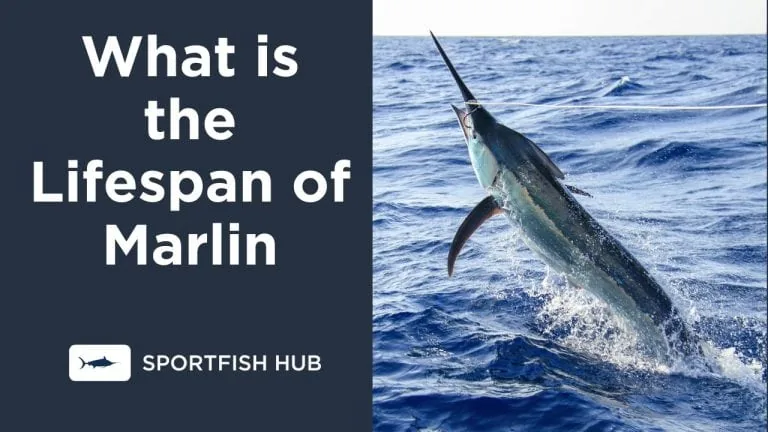Understanding the lifespan of marine creatures like the Marlin is crucial for their conservation.
So, “What is the lifespan of a Marlin?” This article aims to answer this question, providing an in-depth look at the life expectancy of different Marlin species.
Blue Marlin
The Blue Marlin, scientifically known as Makaira nigricans, is one of the most well-known species of Marlin. Females of this species tend to live longer than males, with an average lifespan of 27 years for females and 18 years for males. Female Blue Marlins grow larger than males and may reach lengths of more than 12 feet and weigh up to 2,000 pounds. Males, on the other hand, reach up to 7 feet in length and live up to 10 years.
Striped Marlin
The Striped Marlin is another species that is quite popular. They typically live for about ten years and reach full maturity within 2-3 years after birth. Males of this species reach maturity a bit more quickly than females do. Striped Marlins can reach lengths of up to 14 feet and weigh between 250 – 450 pounds.
Atlantic Blue Marlin
The Atlantic Blue Marlin is another species worth noting. While specific lifespan data is not readily available, it’s known that females of this species grow to be approximately four times longer than their male counterparts.
Factors That Affect Marlin Lifespan
Environmental conditions, such as water temperature and availability of food, along with predators like sharks, swordfish, and humans who practice unsustainable fishing practices, can have a significant impact on the lifespan of marlin.
Environmental Conditions
Environmental conditions play a crucial role in the lifespan of marlin. The ideal habitat for marlin is warm, tropical waters with high levels of oxygen. These fish prefer clear waters that offer them ample opportunities to hunt their prey.
Marlin larvae feed on zooplankton, including drifting fish eggs and other tiny organisms found at the surface of the water. As adult marlin grow larger, they require a diet that includes large predatory fish such as tuna or mackerel.
Due to commercial fishing practices that target these species, many feeding grounds for marlin have been depleted over time.
Predators
Marlin are apex predators, but they also have their fair share of threats in the wild. Some of their natural predators include large sharks like tiger sharks and great whites, as well as Orcas (Killer Whales).
In fact, fishing for marlin often involves using artificial lures that mimic smaller fish to attract larger predatory ones. This means that fishermen need to be vigilant for any unexpected visitors looking to steal their catch.
Conclusion
In conclusion, the lifespan of marlin varies depending on the species and gender. The Atlantic Blue Marlin can live up to 27 years, while the Blue Marlin lives up to 15 years.
The Pacific Blue Marlin has a longer lifespan, with males living at least 18 years and females living at least 27 years. Several factors affect their longevity, including environmental conditions, predators, and fishing practices.
Age validation has been elusive for blue marlin due to difficulties in determining their exact age. It’s essential to conserve these majestic fish by implementing sustainable fishing practices, as they play an integral role in maintaining ocean ecosystems’ balance.












